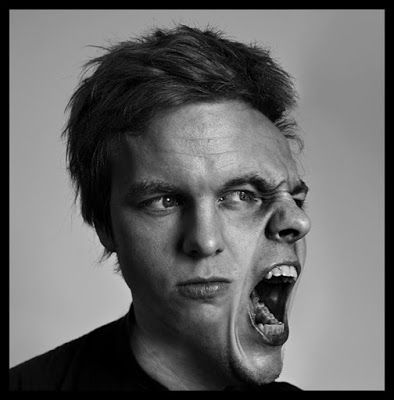In today’s fast-paced life, the essence of living is often compromised. With our relentless pursuit of perfection in work schedules, mastering routines, and chasing future goals, we often forget to cherish and savor life. As everything comes at a cost, this constant race to achieve success or secure the future is also not free from it, rather, it takes a big bite, affecting our mental and emotional well-being.
When our aspirations, whether physical, emotional, or psychological, are not fulfilled on time or in the way we want them to be, our personality spirals towards two extremes—aggression or depression, depending upon our inclination, temperament or ability to handle situations. Let’s sneak into this complex warp and weft of human life.
The Link Between Aggression and Depression
Other than love, there are mainly two types of emotions—aggression and depression—that build up the entire human emotional system. The rest are the offshoots or combinations of these emotions. It would not be wrong to say that these two are, two different sides of the same coin. The only difference is that aggression is associated with outward hostility and anger, whereas depression tends to manifest inwardly, involving feelings of sadness, hopelessness, and a lack of energy.
Psychologists also believe that the roots of both these emotions are deeply linked to emotional dysregulation and stress. For instance, prolonged anger towards oneself or others often turns inward. It compels the person to become overly self-critical, making him believe himself worthless, ultimately leading to depression.
Conversely, depression can sometimes fuel aggression, particularly when an individual’s withdrawal, isolation, trauma or abuse continues for a long time or his frustration and sadness reach a breaking point.
The Origins of Aggression and Depression
Aggression and depression both states are often the outcome of our reactions to perceived threats, unresolved trauma, or a lack of control in life. According to Neuroscientists, both are linked to the amygdala, the brain’s emotional center. When this center becomes overactive under stress, it can perpetuate cycles of anger or sadness, and the individual is trapped in emotional turmoil.
- Biological Influences: Both aggression and depression are influenced by brain neurotransmitters like serotonin, dopamine, and norepinephrine. Heightened aggression and depressive episodes are linked with a lack of serotonin, and dopamine imbalances affect mood regulation and motivation.
- Environmental Factors: Living in a hostile environment can contribute to both aggressive and depressive tendencies. Childhood trauma, exposure to violence, and chronic stress can develop aggressive tendencies in individuals. Both aggressive and depressive behaviors due to feelings of helplessness are used as a defense mechanism.
- Parenting: In certain communities, suppressing emotions has been taught since childhood. Negative thought patterns, unresolved grief, and feelings of inadequacy are not addressed at home, fueling both conditions. Hence, later in life, people who suppress their emotions or have difficulty expressing anger constructively may develop depression or aggression over time.
Balancing Aggression and Depression Through Meditation
Sahaja Yoga teaches to balance these two most complex emotions i.e. through meditation. It asserts that nourishing the root cause within, can balance the three Doshas of the three Nadis (channels– Ida, Pingla and Sushumna) of the subtle system.
Every human being has a subtle body within the gross body that is responsible for his overall well-being. All the seven chakras and the nadis along with Kundalini play an important role in improving and nourishing one’s physical, emotional and psychological being. According to Sahaja Yoga ‘Aggression’ and ‘Depression’, primarily originate because of the imbalance in the Pingala and Ida Nadi respectively.
The Swing of Aggression and Depression
Pingla Nadi the Sun Channel:
The channel on the right side, controls the excessive heat in our body that is generated because of over-activity, excessive thinking, or restlessness resulting in aggression. This channel originates from the chakra Svadishthana and on reaching the sixth centre Agya it turns towards the left side of the Brain (Sahastrara– Crown Chakra). The main reason for aggression to change into depression, for left channel is responsible for correcting depression the emotional crisis.
Ida Nadi the Moon Channel:
Depression is one of the factors that Ida Nadi (left side channel) takes care of. Just like the Sun Channel, this Moon channel also turns to the right side of the brain in Sahastrara which turns depression into aggression. Sahaja offers very simple techniques to balance aggression and depression. But to avail oneself of the full benefit of these techniques, one needs to activate the subtle system first. The awakening of the Kundalini, the first and foremost step of yoga (the union), is required. It’s a simple process that does not even take much time. Click here to get your self-realization through Kundalini Awakening.
Help from Elements:
Pingala Channel: Water and Ether Element
Ida Channel: Fire and Earth Element.
To learn about the techniques in detail you can visit the local Sahaja Yoga Center.
Life with Balance Emotions
To balance the aggression and depression, regular meditation helps a great deal. It reduces the intensity and frequency of both and allows individuals to function more effectively. People doing regular meditation and using the power of elements in the Sahaja Yoga way report feeling calmer, more focused, and better equipped to handle challenges.
With aggression in check, sleep quality gets improved, and physical symptoms like headaches or muscle tension are reduced, enhancing overall well-being. Ultimately, a balanced emotional state leads to greater life satisfaction and a deeper sense of fulfillment.
Conclusion
The relationship between aggression and depression is complex; if not managed timely, it can disrupt life. But the good news is that it can be managed. Meditation is a natural and effective tool that helps in balancing these emotions. Medicine or mental exercise can soothe down emotions for a short span, but to rectify the root of this problem, regular and sincere meditation is required.
Image: Sahaja yoga, Pinterest

